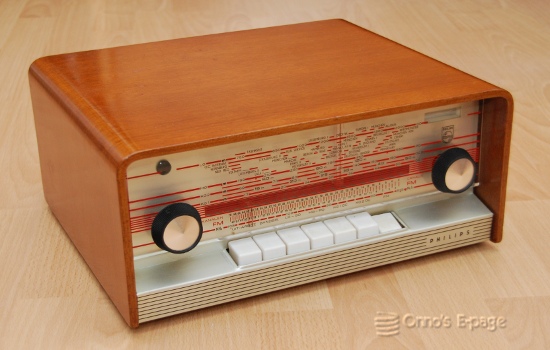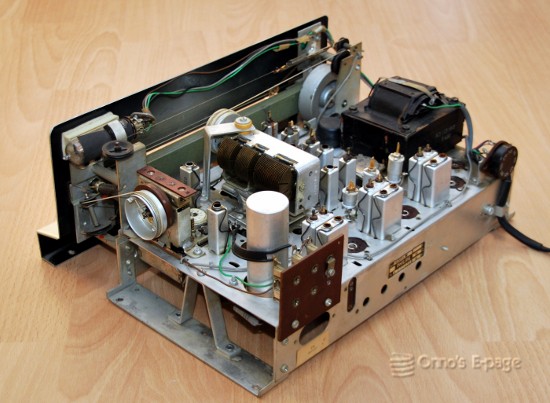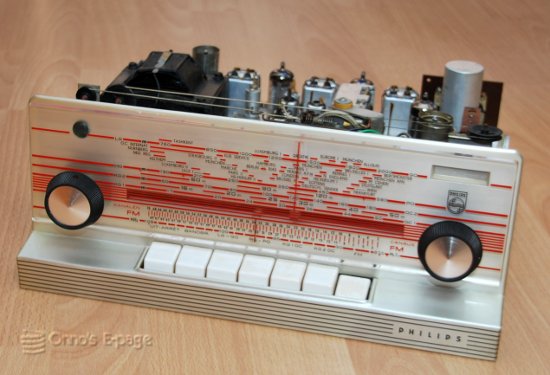Philips A5X83A tuner (1958)


The A5X83A is a tuner, not a complete radio. The model is from 1958, and it is modernistic in its design. My specimen looks like it is from 1960, it might be an A5X83A-19 but somebody has blotted out the “-00” or “-19” part on the type label at the back, so I don't know. This tuner has more valves than some radios that do have an AF output stage:
When I opened the case, I saw the previous owner had already started cleaning the tuner. On the inside, a layer of greasy dust was covering the chassis. I pulled the valves and cleaned the inside.

A view of the chassis after cleaning, valves not yet in place.
I tried the tuner and was pleasantly surprised by its sensitivity. On AM as well as on FM it received a lot of stations and produced a good sound quality (by the way, the actual sound was coming from a set of computer speakers, which is of course a bit of an insult, but I didn't have a valve amplifier at hand).
The position of the pointer was wrong on both AM and FM. For AM this was simply a question of shifting the pointer a bit on the tuning string. But on FM, I needed to set one of the trimmers on the FM tuning module. I did this using stations with known frequency as a reference. Later on, with my newly built FM signal generator I would be able to confirm the scale was tuned quite well.

The chassis reassembled and operative.
Before I was satisfied, I needed to make a few repairs to the case. The case construction is very simple: no elaborate shrinery, just a U-shaped plywood cover with fine veneer. One corner was broken, but the piece of plywood came with it. I glued it in place using white glue and filled the cracks. Then I filled some deep dents in the case, sanded it slightly and sprayed it with a coat of clear polyurethane varnish. This gives very good results on some places, but I don't seem to be able to get a nice even coat. The result is reasonable though, but with some rough patches and drips.
After this, I reassembled the tuner. I'll need to find a more worthy amplifier to use it.
Copyright © 2009 by Onno's E-page published 2009-11-28